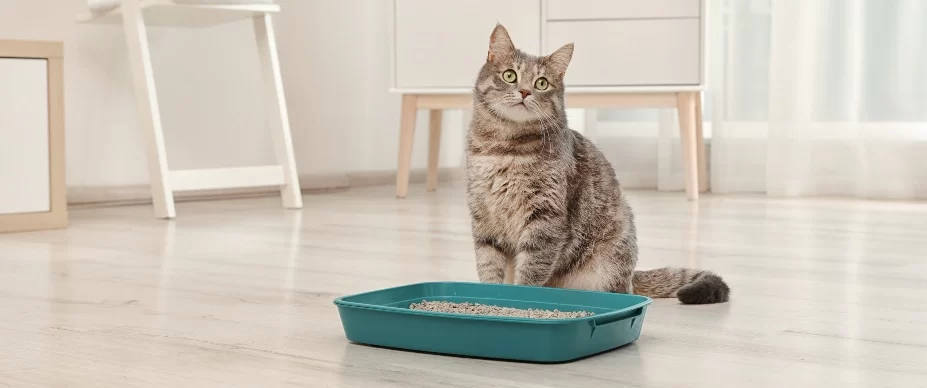Why Litter Box Training is Important for Your Cat
As a cat owner, one of the first things you’ll need to teach your new feline friend is how to use a litter box. This may seem like a simple task, especially since cats are naturally clean animals, but some may need a little guidance to get the hang of it. I remember when I first adopted my cat, Whiskers, and thought she would instinctively know how to use the litter box. But much to my surprise, she had a few accidents before getting it right. If you’re in the same situation, don’t worry – training your cat to use a litter box is easier than you think, and I’m here to share the steps that worked for me.
Why Some Cats Struggle with the Litter Box
Before we dive into training, it’s important to understand why some cats have trouble using the litter box. Cats are clean animals, and they instinctively prefer a private, quiet place to relieve themselves. However, various factors can interfere with their ability to use the litter box, including:
- Incorrect litter box placement: Cats are sensitive to where their litter box is located. If it’s too noisy, hard to reach, or in a high-traffic area, your cat may avoid using it.
- Type of litter: Some cats are particular about the type of litter they prefer. If the texture or scent is unpleasant to them, they may refuse to use the box.
- Cleanliness of the litter box: Cats are meticulous creatures, and a dirty litter box can cause them to look for alternative places to go.
- Stress or anxiety: Changes in the home, such as moving to a new house or the introduction of a new pet, can cause a cat to feel stressed, which might affect their litter box habits.
Once you understand the potential reasons behind your cat’s reluctance, you can better tailor your training to suit their needs.
Step-by-Step Guide to Litter Box Training Your Cat
Training a cat to use the litter box is a gradual process that requires patience and consistency. I’ve outlined the steps that helped me successfully train my cat, and I’m confident these techniques will work for you too.
1. Choose the Right Litter Box and Litter
The first step in litter box training is selecting the right box and litter. There are many options out there, and it’s essential to choose one that your cat will be comfortable with. Here's what you need to consider:
- Size and style of the litter box: Your cat should have enough space to comfortably enter, turn around, and squat. If you have a kitten, a smaller box might be more appropriate, but as they grow, you’ll need to upgrade to a larger one. Some cats prefer covered boxes, while others prefer open ones – you might need to experiment to see which your cat prefers.
- Type of litter: Cats are sensitive to texture, so choose a litter that is soft and natural. Clay-based clumping litter is popular, but some cats prefer crystals, recycled paper, or natural litters. Try different options to see what your cat enjoys the most.
Remember to clean the litter box regularly. Cats won’t use a dirty box, so scoop it daily and replace the litter as needed.
2. Place the Litter Box in a Quiet, Accessible Location
Placement of the litter box is crucial. Cats need a private, quiet spot where they can go without distractions. If the box is in a noisy area with lots of foot traffic or near their food and water, they may be hesitant to use it. I found that placing the box in a quiet corner of my living room worked best for Whiskers. It’s also important that the box is easy for your cat to access, especially if they’re a kitten or have mobility issues.
Try to avoid placing the box near loud appliances or in busy hallways. A calm, peaceful location will encourage your cat to use it consistently.
3. Show Your Cat Where the Litter Box Is
If your cat is new to the litter box or has had previous accidents, it’s important to show them where it is. Gently place your cat in the litter box after meals or naps, as these are the times when cats are most likely to need to go. You can also place them in the box when they start sniffing around the area or showing signs of wanting to relieve themselves. Allow them to explore the litter with their paws and help them get used to the texture.
If your cat doesn’t immediately use the litter box, don’t worry. Just keep placing them in it a few times a day, and eventually, they’ll start using it on their own.
4. Reward Positive Behavior
Positive reinforcement is key to training your cat. Whenever your cat uses the litter box successfully, reward them with praise, treats, or gentle petting. Cats respond well to rewards, and this helps them associate the litter box with positive experiences. I found that giving Whiskers a small treat after she used the box for the first time was a great motivator!
Be sure to avoid punishing your cat for accidents, as this can create anxiety and confusion. Instead, calmly clean up the mess and place your cat back in the litter box to reinforce where they should go.
5. Be Patient and Consistent
Litter box training takes time, and every cat learns at their own pace. Some cats may catch on quickly, while others might take a little longer. The key is to remain patient and consistent with your training efforts. Stick to the same routine, and gradually, your cat will associate the litter box with the right behavior.
If your cat continues to have accidents despite your best efforts, there may be underlying issues that need to be addressed. This could include health problems, stress, or an aversion to the litter box. In such cases, it’s best to consult with your vet for advice and further guidance.
Additional Tips for Successful Litter Box Training
Here are a few more tips that can help make litter box training easier for both you and your cat:
- Have multiple litter boxes: If you have a multi-cat household, ensure there are enough litter boxes for each cat. The rule of thumb is one box per cat, plus one extra.
- Keep the box clean: Scoop the litter box at least once a day and completely change the litter every week. A clean box will encourage your cat to use it consistently.
- Use a cat-friendly cleaner: If you need to clean up accidents, use a pet-safe cleaner to eliminate odors and discourage your cat from using the same spot again.
Training a cat to use the litter box is a process, but with patience, consistency, and the right environment, your cat will learn in no time. Remember, every cat is different, and some may need more time or gentle encouragement than others. With these steps, you can ensure that your cat is comfortable and happy with their litter box.












